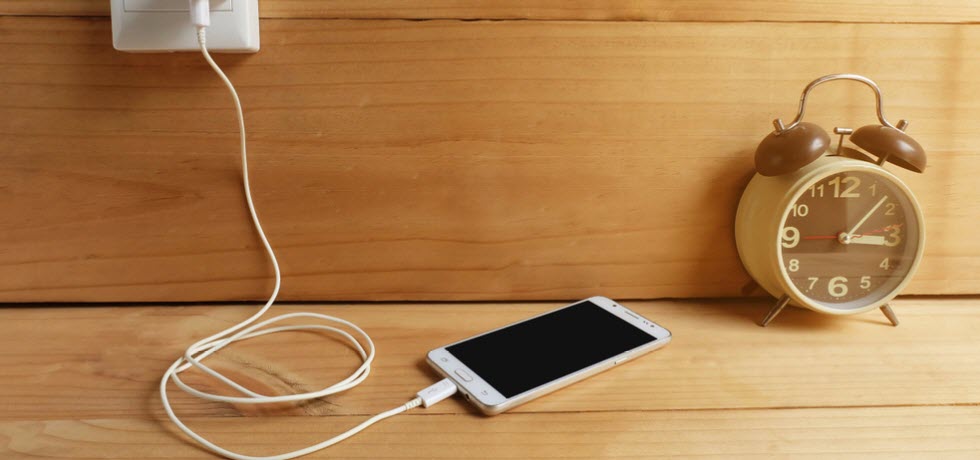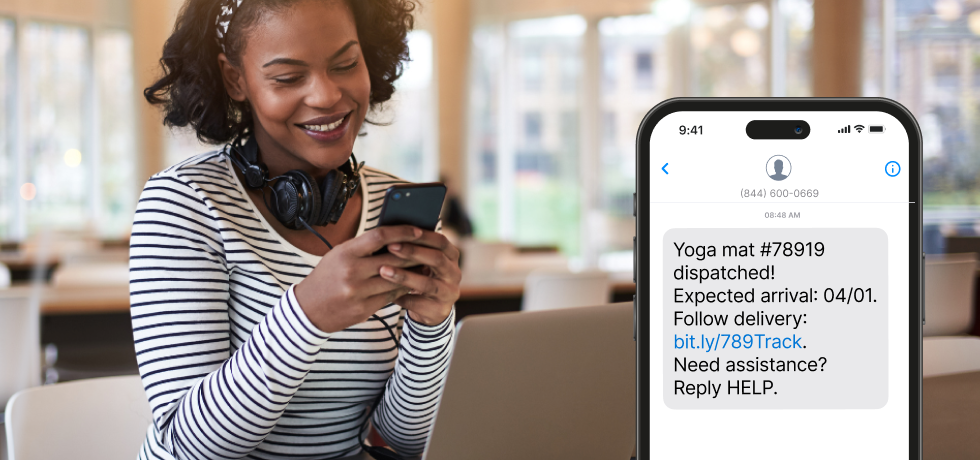Share

A phone could have all the latest features, and they would be pointless without a long-lasting battery that allows you to enjoy them.
Naturally, people are concerned about preserving the lifespan of their phone battery. Also, mobile phone technology evolved at an alarming pace in the last decades, leaving many of us behind in knowledge. These factors led to many myths about phone charging circulating online and even by word of mouth.
If you’re looking to take good care of your phone and keep using it for as long as you can, we have all the instructions you need, together with the reasoning behind them.
The article will cover:
- The science behind charging a phone battery
- Some factors that affect the durability of mobile phone batteries
- What you can do to increase the life of your phone battery.
With that in mind, let’s dive in!
How does your phone battery store its charge?
Li-ion battery charge/discharge cycles are chemical reactions triggered by electricity. Lithium ions flow from the positive to the negative electrode while charging and then from negative to positive while you use your phone.
The Li-ion batteries found in modern phones today have been around for quite some time and were constantly developed to be smaller, safer, and last longer.
Modern batteries are much more safe and efficient than their nickel predecessors, which overheated quite rapidly, changed shape over time and required to only be charged when the battery was completely empty due to the “memory effect”.
Factors that affect the durability of mobile phone batteries
The life of your phone battery is already determined when it’s manufactured. However, your charging habits can maintain or shorten the life of your phone battery.
Charge/discharge cycles
Phone batteries usually have a specific number of charge/discharge cycles intended that is somewhere in between 300 and 500. A charging cycle means going from full battery to completely empty and then back again.
Realistically, a battery requires a few charges to complete a full cycle, so it’s difficult to calculate how many cycles you used up. Battery life will decline with usage, and the best you can do is slow down that process by being mindful of your phone charging habits. If you encounter issues such as your iPhone not charging, it could be related to the battery reaching its cycle limit or other factors affecting battery health.
Temperature
Phone manufacturers recommend you only use your phone in a place where the ambient temperature is between 0º and 35º C (32º to 95º F). Phones are designed to turn off when the temperature is not appropriate for use, which will keep your phone safe from damage, but if you really need to use it for navigation, important calls, or even emergencies, this can be very inconvenient.
Extreme temperatures can permanently damage your phone battery after multiple exposures. Dramatic temperature variations should also be avoided because it can lead to moisture getting trapped inside your phone and damaging components.
Charger
Contrary to popular belief, using a different charger than the one your phone came with, or the one your phone manufacturer is offering, is not going to ruin your battery. The issue is with low-quality knock-off chargers.
These chargers are usually much cheaper than the real deal. They’re not manufactured according to industry standards and lack the physical and technological safeguards you get from a brand charger. Knock-off chargers can not only damage your phone battery but dangerous explosions have also been documented.
Modern batteries have a built-in chip that helps regulate the input coming from the charger. So even if, let’s say, you’re using a fast charger with a phone that cannot take in that much voltage, your phone will simply charge at the rate its battery was designed for. The fast charging feature will not do anything in this case.
Is wireless charging bad for battery? Heat is also the issue here. Good-quality certified wireless charging pads often have built-in cooling and are designed to keep your phone at the right temperature while charging. They also have the advantage of reducing mechanical damage to your phone’s charging port.
Also, phones at the moment come with various charging protocols and charging speeds that need a compatible charger for fast charging to take place. Without compatibility, a fast charger will simply work as a regular charger.
Tips for preserving the lifespan of your phone battery
Tip #1: Avoid extreme temperatures in general, especially while charging
As we’ve said earlier, extreme temperatures are the biggest enemies of mobile phone batteries. To keep your battery in tip-top shape for longer, you should avoid exposing it to extreme heat or cold.
The most common situation when a phone gets too heated is when you leave it in the sun for too long in summer, for example, on a beach towel, on the dash of the car, simply anywhere that is directly under the scorching sunlight. If your phone is also charging in any of these situations, it will only be worse. Try your best to keep it in the shade or at least covered with a bright material that will absorb less heat from the sun.
There is a myth circulating on the internet that keeping your phone in the freezer will somehow improve battery health. In truth, charging your phone in freezing temperatures multiple times will cause permanent damage to the battery. Also, the charger must keep up with the accelerated discharging caused by extreme cold, leading to a slow charge. You might have noticed that when using your phone outside on freezing winter days, the battery goes down quickly.
How to keep your battery cool while charging your phone:
- Remove your phone from the case. Cases can cause heating problems because the phone is less exposed to air, and this will slow down the process of cooling.
- Avoid charging your phone in an environment with poor ventilation. Be sure to charge your phone in a place that is cool and dry.
- Avoid using your phone for a long time while charging. The heat generated by the screen and other components will add up to the charging heat and potentially damage your battery. You can also reduce the number of apps running in the background and screen brightness or turn off location services.
- Turn on Airplane mode. This will prevent battery overheating and also make your phone charge faster. Airplane mode saves battery by automatically turning off cellular data. Also, your phone also charges faster on low power mode.
Tip #2: The phone charging sweet spot is between 20% and 80%
It feels natural to get a full charge every time you get the chance, in order to be able to make the most of your phone before the next charge. Also, we don’t recommended letting your phone die before charging again as we used to do with the acid batteries of the old days. This will actually damage a modern lithium ion battery.
So at what percentage should you charge your phone? The best practice for preserving phone battery health is to plug it in at around 20% and charge it up to 80-90%. This is especially important if you use fast charging, as charging from 0% will cause a lot of heat, and from 80% up, fast charging becomes less efficient.
However, there’s no risk of overcharging the battery. Phones these days are supposed to have built-in features meant to preserve battery health, such as turning off the phone before it actually drops down to 0%, interrupting charging when the battery is almost full, and more commonly alerting the user when the phone is too hot and subsequently turning it off.
Tip #3: Charge your phone battery halfway before storage
If you plan on not using your phone for a long time, it’s best to charge it halfway. Apple recommends turning on your phone every six months and charging it to 50% to preserve the battery. Also, be sure to store your mobile phone batteries in a cool, dry place to prevent damage.
Tip #4: Avoid cheap chargers; use fast charging in moderation
Knock-off chargers are unsafe, both for the phone and its user. Because components are not properly insulated, there’s a high risk of short circuit and catching fire, especially in humid environments such as bathrooms. Low-quality cables are also not recommended for use.
Also, if you want to hold onto your phone for several years, you should use fast charging in moderation. The convenience of getting your phone to 100% in half an hour does come with a trade-off. As the chemical reaction is sped up, it generates more heat which, over time, will shorten the lifespan of the battery.
However, while slow charging will not cause so much heat, it will take longer to charge your phone, and it still won’t halt the inevitable process of battery degradation. It comes down to convenience versus battery lifespan. Are you wondering how long a phone battery lasts? It depends on your usage and charging habits, but if you’re planning to upgrade your phone every two years, you don’t need to worry about fast charging damaging your battery.
Tip #5: Unplug your phone after charging
When you charge your phone overnight, the battery will fall down to 99% and start charging again. This is called trickle charging, and it will happen pretty often throughout the night. The problem with trickle charging is that it generates heat, and if the room is hot or you have objects placed on top of your phone, that heat can damage the battery.
While we won’t urge you to give up the convenience of charging overnight, we advise you to make sure that your phone is exposed to air, preferably in a well-ventilated room, taken outside its case.
There’s also the option of getting your hands on a smart charger that will turn off when the battery reaches a certain percentage of charge. Also, if you happen to wake up during the night, you can simply unplug your phone.
We hope you’ve learned a thing or two about how to charge your phone to save the battery. Applying the knowledge that you’ve learned here will help you maximize battery life and allow you to enjoy using your phone longer!






